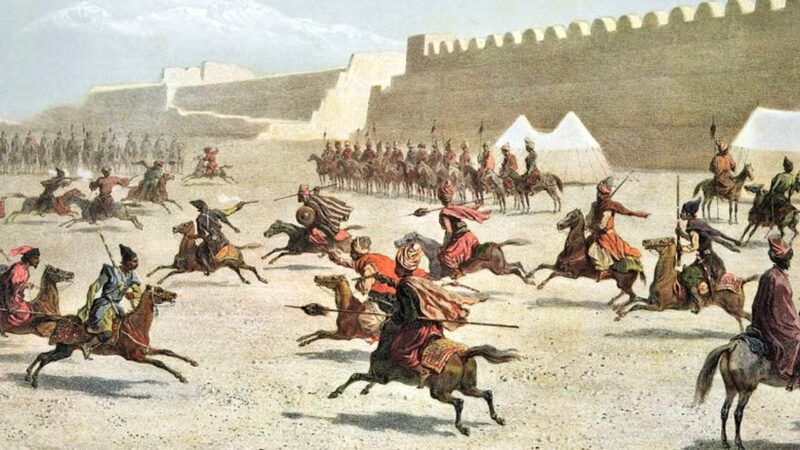Picture a time when the sound of horses and tough warriors was common in Eastern Europe and Russia. These were the Cossacks, known for their strong independence and skill in fighting.
This article will explore their beginnings, way of life, and lasting impact.
Key Takeaways
- The Cossacks emerged in the 15th century along the Dnieper River, primarily from Slavic peoples.
- They had a unique democratic society, with elected leaders known as Atamans and collective decision-making in fortified communities called ‘Sichs’.
- These warriors were renowned for their military skills, especially in horsemanship, shooting, and swordsmanship, developed through constant warfare against various invaders.
- Their relationship with the Russian Empire was complex, initially independent, later integrated into the Tsarist military, serving as a buffer against invasions and as elite troops, but they often resisted full integration.
- Post the 19th century, the Cossacks faced severe repression under the Soviet Union, leading to the suppression of their culture.
Origins and Early History
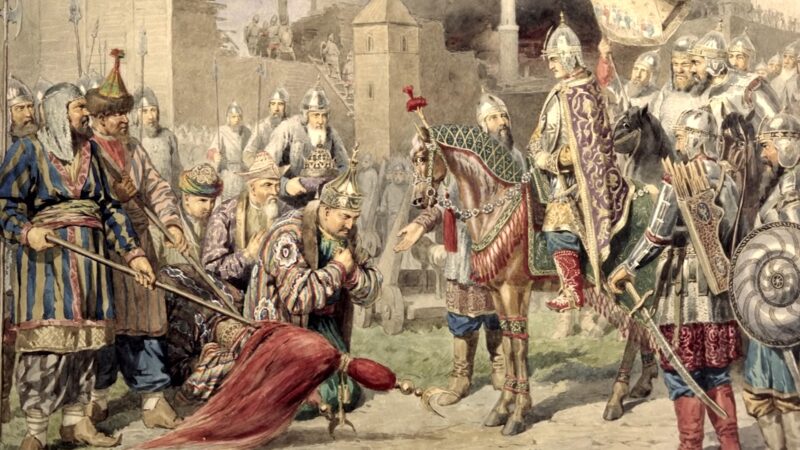
The story of the Cossacks begins in the 15th century. Originating from the Slavic people, they emerged along the Dnieper River in what is now Ukraine.
These early Cossacks were a mix of runaway serfs, adventurers, and others seeking freedom from the rigid structures of Eastern European societies. Living in a region known as the “Wild Fields,” they created a society that was strikingly different from their neighbors.
This society was marked by a strong sense of community and a deep connection to the land. Their lifestyle was heavily influenced by the harsh, nomadic conditions of the steppes, shaping them into resilient and adaptable people.
Society and Culture
Cossack society was unique. They were known for their democratic self-governance, electing leaders known as Atamans.
Their communities, or ‘Sichs,’ were fortified camps where all decisions were made collectively. This democratic ethos was rare in a period dominated by autocratic rule.
Women in this society often played crucial roles, especially in maintaining households and supporting community needs. Festivals and religious ceremonies were central to Cossack culture, reflecting a blend of Christian and traditional beliefs.
Military Lifestyle
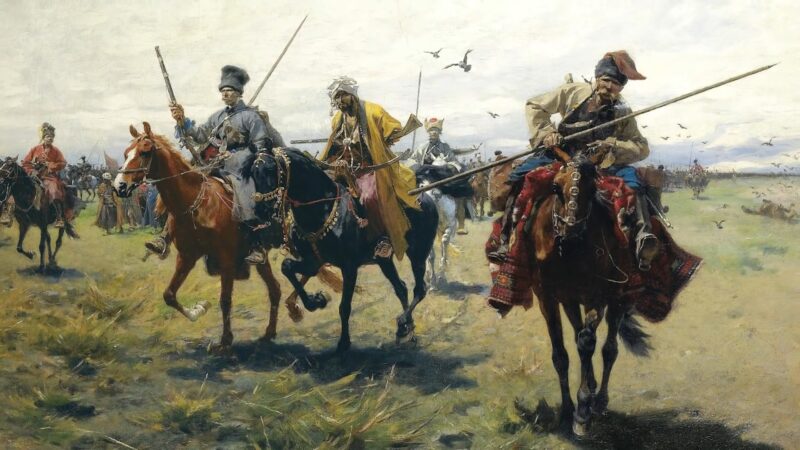
Military prowess was at the core of Cossack’s life. Trained from a young age, they became skilled horsemen, proficient in both shooting and swordsmanship.
Their primary role was defending their territories against various invaders, ranging from the Tatars to the Ottomans. This constant state of warfare honed their skills, making them formidable opponents.
Their tactics in warfare were innovative, often involving guerrilla strategies that utilized the terrain to their advantage. The Cossacks were also known for their distinctive attire, which included fur hats and decorated uniforms, enhancing their fearsome appearance in battle.
Role in the Russian Empire
The Cossacks’ relationship with the Russian Empire was complex. Initially, they were independent, but over time, they were co-opted into the Tsarist military.
The Tsars valued them as a buffer against invasions from the south and as shock troops in wars. In return, the warriors received privileges, including land and autonomy in local governance.
However, this relationship was often strained, as the Cossacks valued their independence and resisted efforts to be fully integrated into the Russian state. Their military contributions were critical in expanding the Russian Empire, particularly in Siberia and the Caucasus.
Rebellion and Resistance
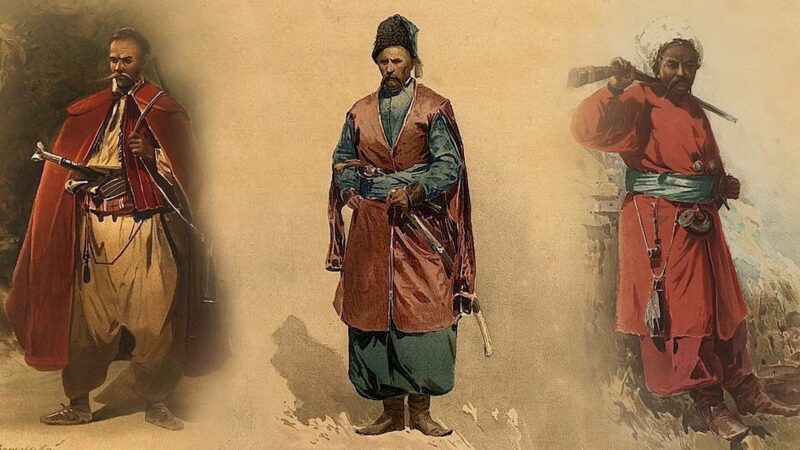
Despite their integration into the Russian military, these warriors had a streak of rebellion. Figures like Stenka Razin and Yemelyan Pugachev led major uprisings against the central authority, fueled by discontent over the loss of freedoms and increasing central control.
These rebellions were deeply rooted in the Cossacks’ desire for social justice and equality. The uprisings shook the foundations of the Russian Empire, signaling the deep unrest among its diverse populations.
The Cossacks in Modern History
In the 19th and 20th centuries, the Cossacks faced dramatic changes. They played significant roles in the Napoleonic Wars, the Russian Civil War, and the World Wars.
However, the rise of the Soviet Union brought severe repression. Their lands were confiscated, and their culture was suppressed.
During these tumultuous times, many Cossacks were forced to assimilate or flee, leading to a diaspora in various parts of the world. The World Wars, especially, saw them torn between different allegiances, often serving in various capacities on both sides of the conflict.
Their Identity Today
Today, the Cossack identity is undergoing a revival. In Russia and Ukraine, their traditions, including dress, music, and dance, are celebrated.
Some groups have even formed to reenact traditional Cossack lifestyles, keeping their rich history alive. This revival is not just about preserving the past; it’s about reinterpreting their heritage in the modern world.
In some regions, their communities have reformed and played active roles in local governance and cultural preservation. These contemporary Cossacks see themselves as custodians of a proud legacy, striving to keep their history relevant in a rapidly changing world.
FAQs
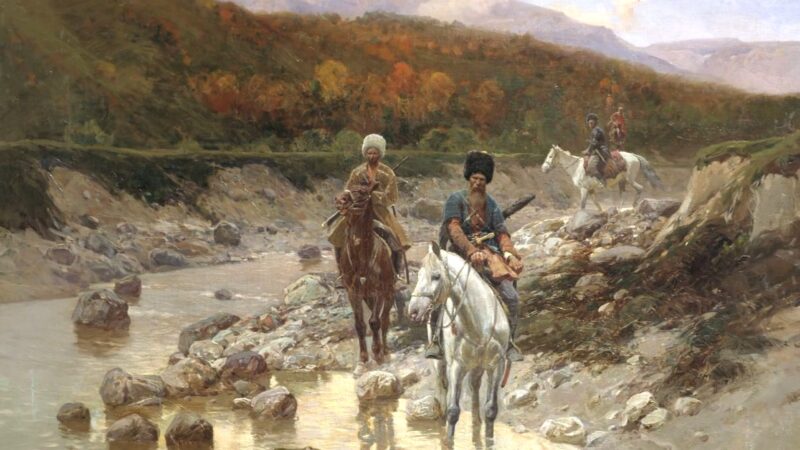
What were the traditional occupations of Cossacks aside from military endeavors?
Besides their military roles, Cossacks were often engaged in farming, fishing, and hunting. They adapted to various livelihoods based on the regional resources available, such as horse breeding and beekeeping.
How did the Cossack way of life influence their art and music?
Cossack’s art and music were deeply influenced by their nomadic lifestyle, battles, and folklore. Their songs often narrated stories of heroism, love, and the beauty of their homeland, while their dance styles were energetic and reflected their vigor and agility.
Were there any notable female figures in Cossack history?
Yes, there were several notable female Cossacks, although less documented. Women like Nastasia Dubrovskaya and Marusia Boguslavka are celebrated in folk tales and songs for their bravery and roles in key events.
Did the Cossacks have any unique religious practices?
The Cossacks were predominantly Eastern Orthodox Christians, but they incorporated local and traditional beliefs into their practices. This syncretism led to unique rituals and celebrations blending Christian and indigenous customs.
How did Cossack’s democratic governance structure function in practice?
Their governance was based on assemblies known as ‘Krug’ where all free Cossacks could participate. Decisions, including the election of Atamans and other officials, were made collectively, often through open debate and majority vote.
What is the significance of the Cossack’s fur hat in their cultural attire?
The Cossack’s fur hat, known as a ‘papakha,’ holds cultural significance. It was not just a part of their military uniform but also a symbol of their identity and status. The style and quality of the fur often indicated rank and wealth.
Final Words
The Cossacks were a symbol of freedom and resistance. From their humble beginnings to their complex role in the Russian Empire and beyond, their story shows the strong spirit of people who didn’t follow the usual rules.
